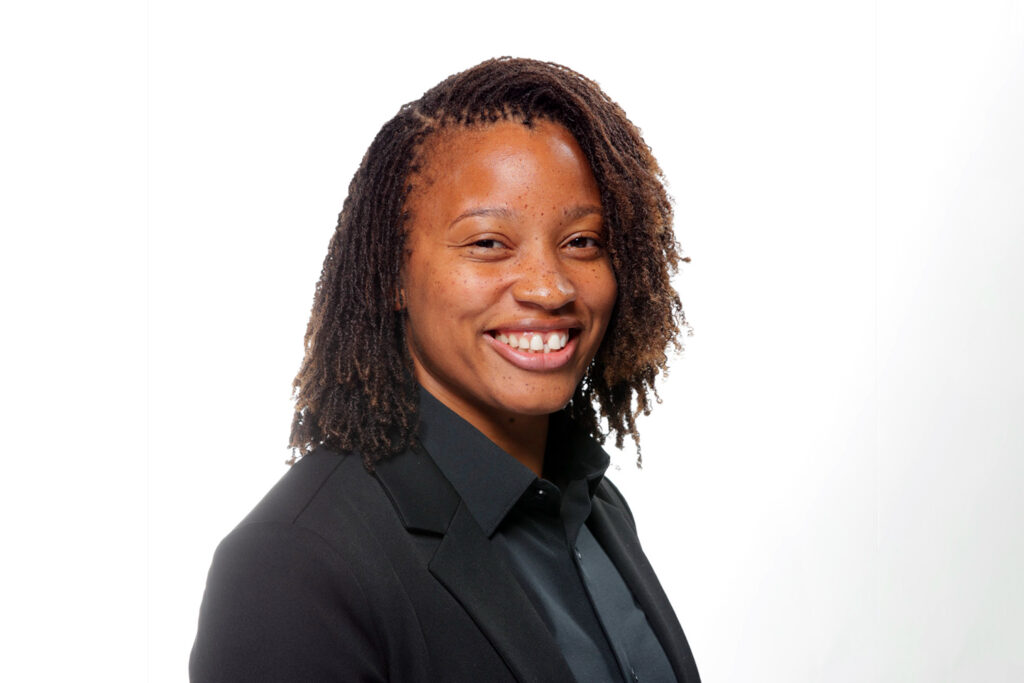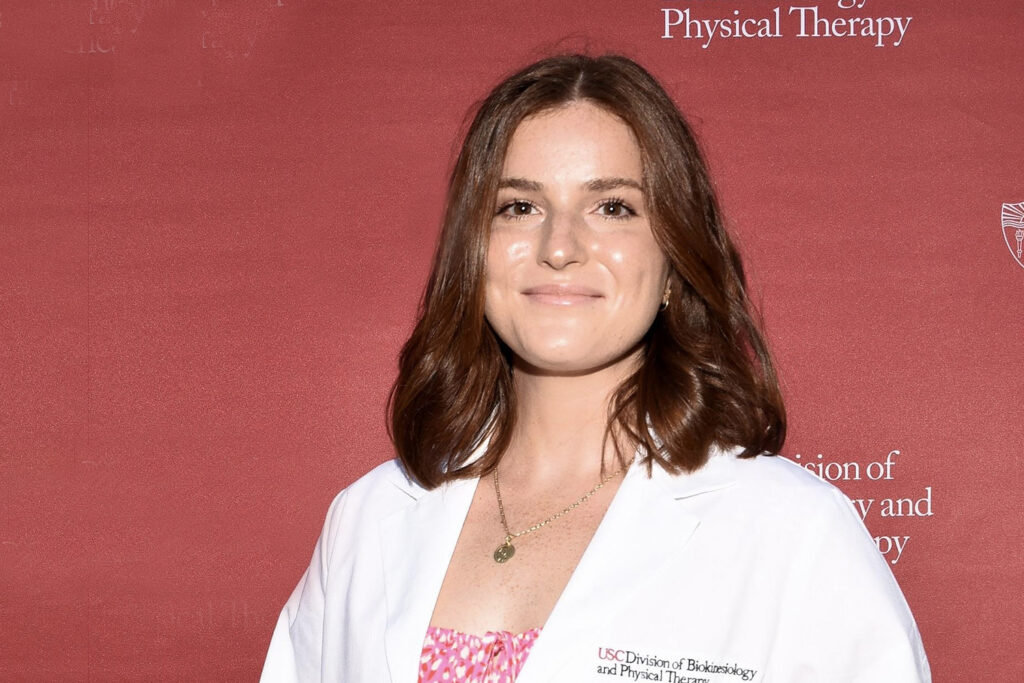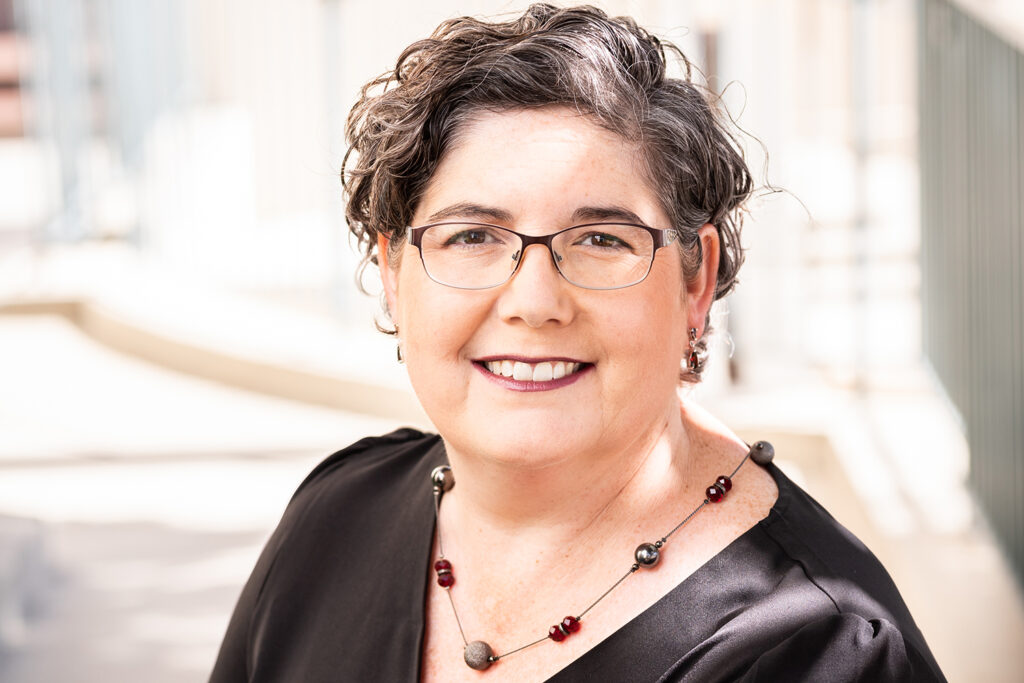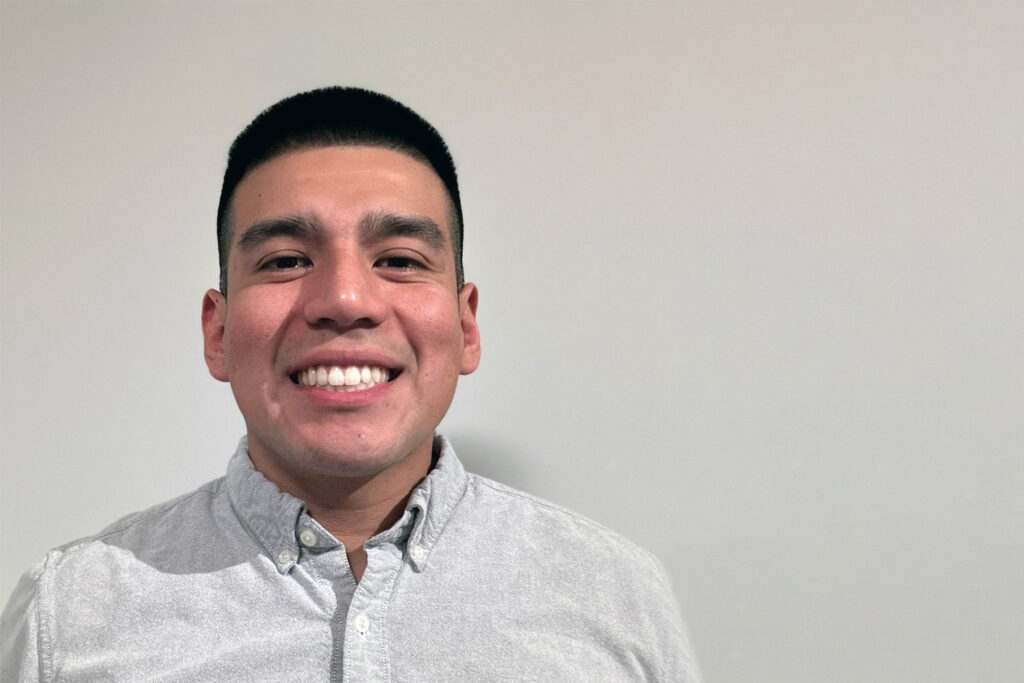05.04.2024
By uscbknpt
Story Slam 2024

Every year, the Division’s Diversity, Anti-Racism, Inclusion, Community Engagement Council hosts a Story Slam, where community members share personal stories that involve patient interactions, cultural experiences within the DPT program or a reflection that speaks to the theme of health justice. This year, we are excited to share several of the stories shared, both in audio and text formats. Text versions have been lightly edited for clarity sake.

Next Steps: California Institution for Women
Wendy Johnson DPT ’21 chronicles her experience, working as a physical therapist at a correctional facility.
BY WENDY JOHNSON DPT ’21
I graduated from USC in May 2021, not knowing what the next steps after graduation will look like.
However, I knew what I wanted for myself. I told myself that I didn’t want a traditional job right out of graduate school. I wanted to be different and challenge myself by treating the unpopular population.
All I had been exposed to during my clinical rotations were majority private practice [and] outpatient experiences, which did not help expand my knowledge of the variety of [nontraditional] settings a physical therapist can be involved in.
That vision came true in March 2022, when I decided to take on a unique population of patients — incarcerated persons at California Institution for Women.
I was drawn to the lack of knowledge about physical therapists being able to work in the prison setting that currently houses about 1,000 inmates who identify as women, transgender men and transgender women.
I remember my first day reporting to work … at the institution was a culture shock for me. I had many overwhelming thoughts on my mind. My first thoughts were: I’m the only physical therapist on campus, and I have been an official clinician only for a few months.
I also factored in that I am a woman as well as a woman of color.
This job is the type of job that most new grads would not consider accepting due to the lack of mentorship and guidance.
However, given that I had applied to this job and was hired, I wanted to see it through to my best ability.
I went into this job knowing that I would not have a mentor, and that I would be alone. So all I would have is myself and my education to depend on during that first official week on the job, working with patients.
I was overwhelmed with negative thoughts and impostor syndrome, asking myself: Can I do this? Is this where I am meant to be?
Give it Six Months
I remember my supervisor telling me on my first day, give this job six months. If you don’t like it, then leave.
He gave me some advice that I intentionally followed, giving myself grace in this new role.
I came into this job, not knowing all that it would entail, such as departmental policies and procedures pertaining to corrections, maintaining order and supervising the conduct of inmates as well as maintaining my own safety during my clinical rotations.
I didn’t have to be as cautious or worry about my safety and surroundings. I was my CI’s responsibility, and I was surrounded by patients who are not incarcerated.
However, once I allowed myself to
have grace as well as trust, my skillset and capabilities came to the forefront of my thinking and my actions.
My thoughts weren’t so overwhelming. In my first six months, I gained a lot of respect and admiration for the incarcerated patient population.
Turning Perceived Weaknesses Into Strengths
At this institution, the inmate patients admired that I was a woman of color, as well as being a new grad, and choosing to work in a correctional facility.
I thought these factors would be detrimental to me, being capable of fulfilling this job role, but it became a strength.
I’ve had patients walk in to my clinic, being thankful and comfortable, stating, finally, someone who looks like us.
The patients I have encountered for the past two years, while being employed at CIW, has made me feel proud, empowered and comfortable of being a Black woman, who is a physical therapist, due to the praise and thankfulness they utter to me.
I had an African American female inmate patient, who was charged as an adult at 15 years old and given a life sentence.
I met her when she was 31.
She had a left meniscus repair in May 2022, and she saw me two weeks after the surgery.
We spent four months together, rehabilitating her knee, which was the longest amount of time that I’ve spent with a patient in this population.
Within those four months, we focused on therapeutic exercise, neuro re-education, gait and posture training, strengthening as well as agility and balance in order for her to meet her goals of being able to dance and run again. She experienced optimism as well as discouragement, when there were setbacks in her rehab process.
However, she always persevered through my encouragement, support and determination to help her succeed.
Her dedication to rehabilitation made me feel that proudness, empowerment and comfort, and not only for my skillset, [but also] for my ability to make an impact on the quality of life of patients that I treat.
Ultimately, I now feel I am where I am supposed to be, making the difference in this unique population while promoting the profession.
Listen below:
https://soundcloud.com/user-4785979-882023512/next-steps-california-institution-for-women-by-wendy-johnson-dpt-21?si=ce05d4a60de2419eb8159d3c260b827a&utm_source=clipboard&utm_medium=text&utm_campaign=social_sharing

The Treatment Patients Deserve
Jessica Pontarollo DPT ’25 shares her experiences, navigating the U.S. insurance system in an underresourced clinic during her first clinical rotation.
BY JESSICA PONTAROLLO DPT ’25
This story is about my first week in my first two-week clinical placement when I was in first year in this program. I was placed in Brooklyn, New York, at a clinic, where the main patient population was of low socioeconomic status. And, forgive me, I’m from Canada. I’m still learning learning the insurance side. But, most patients, from what I learned while I was there, had insurances that had very little coverage based off their needs. I don’t know exactly. I apologize.
I had many patient interactions, where I was repeatedly made aware of the lack of resources that was available for these patients, as well as a lack of patient-centered care.
Just for context, there was roughly about one to two PTs, one PTA and one aid and a student (if I or another student was there) for every seven patients scheduled within one hour, and this was done for multiple hours of the day.
It wasn’t out of the ordinary, and I want to highlight that the staff there was very amazing, and they did the best job that they could with what they had.
However, the patients … still did not receive the care that they deserved, I believe, due to the insurance issues and lack of support from the higher-ups of the clinic’s management.
Just as an example: There was one patient who was an elderly lady in mid-treatment. I believe she was getting soft tissue done, and the front desk staff had to explain to her that her insurance was actually not covering the session that she was currently in and, if she wanted to continue, she would have to pay out of pocket, which is a conversation that I’ve never gotten to witness. I think it was in my first week there, so it’ was very eye opening.
The patient was clearly in pain, and would benefit from PT. However, she was denied access due to an issue with insurance.
I don’t have the specifics on the details of why she was not being covered. All I knew that there was an issue. And the all I knew is that this issue is something that I heard
multiple times after that, with other patients as well.
Stretched Thin
As I mentioned, there was several patients scheduled within one hour.
And they were all to be seen by the one PT, that was working on that schedule.
So many patients complained that they only ever talked to the PT at initial evaluation, and then never saw that same PT ever again. Sometimes, that same PT wasn’t even working when they came back,
and they were just doing the same exercises or treatment plan with the PTAs or aids, and it was up to those staff to progress the exercises as they saw fit.
The treatments provided were very routine and similar to each patient due to the lack of time that the PT had, so the patients that she was able to see she kinda had to quickly go through as much as she could within the time that she had in order to spread her time across six seven patients within an hour.
This just shows that there was a lack of resources for her to be creative in that environment and take the time to get to the actual root of the problem that the patients we’re dealing with.
Many of the interventions provided were for symptom modulation to just make the patients feel better but did not address the root of the problem.
Language Barriers
Finally, another patient, who did not speak English at all, was being treated for low back pain. The clinic did not provide any translator service. I don’t know if this is a New York issue cause I learned from Dr. Resnick that is required now.
Instead, the PT learned the number 20 and taught me how to say that number in the patient’s language. I had to go into the patient’s room, demonstrate the exercise physically, and then say that number 20 in their language for the amount of reps that they would do, and this did not allow the PT or me any options to progress those exercises, to better explain the treatment given to the patient or to change the dosing at all.
We are not provided the tools needed in order to provide high-quality, patient-centered care overall. The staff, like I mentioned, did their best with the resources that was available to them. I believe this again, was a higher-up issue, due to the scheduling and what the clinic expected of the staff.
Hope for Health Equity
I don’t believe the staff was supported as they should have been in order to treat the patients in that community properly.
This really opened my eyes to the reality of some PT clinics and the negative views that some patients may come in with about PT, to different clinics.
I now have a lot of empathy working with patients that are unsure of PT because of their experience, and it’s made me want to provide even better care for every patient that I see from now on, to make sure that I never have to treat patients less than they should be treated.
I understand that the US healthcare system and healthcare insurance is a very complex piece to take on. As I said, I’m from Canada, still learning. To be fair, I need to learn the Canadian one, too, so I got a lot to learn, but I’m not sure if I’m equipped for those challenges just yet. However, I do know that I want to learn more about these different systems in order to better navigate them, so I can guide my patients through them and be able to get them the care that they deserve.
From this program, I have met many dedicated and inspiring PTs, both in the faculty and in students, my classmates, and in all different years. And it’s giving me hope for a brighter future of health equality.
Listen below:

Anxiety is Not Cute
Samantha Ramirez DPT ‘24 shares her experiences battling anxiety to pursue a career in physical therapy.
BY SAMANTHA RAMIREZ DPT ’24
Anxiety is not cute, and anxiety is not fun.
Anxiety is not something you make light of, and it’s not something you say to get laughs. Anxiety is being 10 years old, crying yourself to sleep because you have so many emotions that are just too big for your little body to handle.
Anxiety is being rushed to the ER at 3 a.m. because your worries got so bad that you made yourself sick
Anxiety is feeling alone in your thoughts, because in your Hispanic household, mental health is not real.
Anxiety is being labeled as the problem child, even though you were feeling so many things at once, and just wanted someone to hear your cries for help.
Anxiety is not cute, and anxiety is not fun.
Anxiety is being terrified that everyone you love is mad at you, even though you did nothing wrong.
Anxiety is learning to become a people pleaser before you even learned how to tie your shoes.
Anxiety is keeping yourself awake at night, replaying every single conversation you had that day.
Anxiety is avoiding talking to anyone that day, so you don’t have to keep yourself up at night.
Anxiety is not cute, and anxiety is not fun.
Anxiety is panic attacks in the darkness of your restroom, hoping and praying that you’ll be able to breathe again soon.
Anxiety is going to therapy appointments but worrying about everything else you should be doing the entire time.
Anxiety is having a breakdown because the day didn’t go exactly as you planned.
Anxiety is disassociating to keep yourself from filling a hundred emotions at once
Anxiety is being medicated in order to function properly. Anxiety is not cute, and anxiety is not fun.
Anxiety is developing an unhealthy obsession with academic validation.
Anxiety is coming home crying in the fifth grade because you got your first B. and felt like a failure.
Anxiety is convincing yourself that you’re not going to get into college, even though you have over a 4.0 GPA.
Anxiety is believing that doing your best isn’t enough, and your worth is dependent on the grade you get.
Anxiety is not cute, and anxiety is not fun.
Anxiety is telling yourself that you’re not cut out for your dream career because you failed your first practical exam.
Anxiety is wiping the tears and snot from your face while driving home, because you feel like everyone else in your class has it figured out, and you just don’t.
Anxiety is getting praise from your mentors but still second-guessing every decision you make in the clinic because you’re terrified of doing the wrong thing.
Anxiety is breaking down in the shower every night, your one safe space thinking you’re gonna let everyone in your life down.
Anxiety is not cute, and anxiety is not fun.
Anxiety is learning to give yourself grace because you’re surviving while fighting against your own brain every single day.
Anxiety is accepting that you’re not alone in this fight, and your feelings are not a burden on the people you love.
Anxiety is realizing that as much as you hate how you feel things so deeply. You also feel love and happiness, just as much.
Anxiety is learning to acknowledge all of the amazing things you have accomplished instead of what you haven’t.
Anxiety is recognizing that as bad of a day, panic attack or emotion overload might seem, the sun always comes up again the next day. Your tears always dry, and your mind always quiets.
Anxiety is not cute, and anxiety is not fun, but anxiety does not define me.
Listen below:

Inequality, Guilt and the Leaky Pipe
Associate Professor and Sykes Family Chair in Pediatric Physical Therapy, Pediatric Health and Development Stacey Dusing reflects on the way in which women are treated in academia.
BY STACEY DUSING
I’m gonna start with some data, because that’s what I do is I talk about data generally. … I wanted to share some statistics that were recently published in the October 2023 edition of the journal Science Advances. While the number of women earning their PhDs now exceeds the number of men who earn their PhDs, the rate of attrition of women in tenure track and tenured faculty positions exceeds that of men.
In fact, in a recent analysis of over 200,000 faculty, they have identified that the gender gap is now increasing with the rate of seniority. So female full professors step out of the faculty track at a 19 percent higher rate than do men of the same rank. This is higher than the rate of mid-tenure track or pre-tenure track women, which are now at 6 and 10 percent.
So we are losing more women in more senior positions across both our professions and academia in general.
Women who leave academia are most often reporting that it’s because of challenges within the culture within academia.
During my career, I have had multiple times when I have had workplace climates that were not conducive to my work and did not make me feel welcome.
Often this is centered around my decision to pursue a fairly rigorous research career, while also having a family.
While this is a difficult criticism to get from your mother-in-law and your mother, it’s much more challenging to get from senior faculty, your supervisor and your mentors.
From the comments of a mentor about the low likelihood of finishing your PhD shortly after you share that you’re pregnant to hearing that
the likelihood of being able to ever balance a research career as well as a family was very unlikely — those comments felt like a judgment of my lifestyle and the choices that I made.
Stunned, I Didn’t Say Anything
Tonight, I’ll share two very specific examples.
When I was six months pregnant with my second child, a male colleague, whose wife was also pregnant and due right around the same time I was, shared with me how terrible it was that I was going to put my child in daycare
For 15 minutes, he told me about the terrible outcomes for my child already in daycare and the new baby I would have for putting them in daycare. This occurred while standing in the hallway in our faculty area without anyone saying anything to him or anyone commenting about the conversation that was quite loud, and many people heard.
I walked away absolutely stunned, and I didn’t say anything. And I didn’t say anything because he was a senior faculty member who would vote on my promotion and tenure in the next few years.
I was unable to make a statement or make a stance, because I felt like it would impact my career substantially.
I really thought I’d put that behind me and move past it, but at Combined Sections this year, I had a colleague come up and talk to me and say, “Have you ever had any issues with this faculty member? He’s now my boss.”
And I was faced with terrible guilt that I didn’t report him when I did. It was 17 years ago, so [it] wasn’t quite as common or accepting to report our faculty colleagues for this type of harrassment. Nor was it at USC.
After hearing my colleague’s story, I just felt terrible guilt for not addressing the issue 17 years ago.
While I’ve been very fortunate to also have very supportive men and women around me during my career, I’ve also identified implicit bias that has been very shocking to also be faced with with someone who you think is very supportive of you.
Pushed Out Rather than Pulled In
While my youngest child was still a baby, I was meeting with my Chair. … I was meeting with him specifically to talk about a career development award that I was about to submit to the National Institutes of Health, so clearly demonstrating my goal was to make advances in my career.
He shared with me that there was an exciting new opportunity in our profession that would lead to career advancement, and it included an opportunity to focus on my research. He then immediately said, “But of course you’re not interested in this. You have a new baby.”
Again, a little shocked that someone would make that statement, but I quickly regained my footing this time and said, “No, I’m most certainly I’m still interested.”
Within a few days, I brought back to him the plan for how I would gain the ability to move my family to the training site.
I had the support of a mentor in the training program aligned, and I had the application started. This time he was the one who was shocked rather than me, feeling like I was in the wrong place
To his credit, he became one of my biggest supporters during my transition, my time away in training as well as after I returned to that faculty position.
In academia, women feel more likely to be pushed out of the field than to be pulled to a more advanced position than men do. The data supports that we tend to walk away because we feel pushed by the career and the stability and the culture in that academic environment.
I feel fortunate that I have been pulled into strong places, and I have been able to pull forward into other career paths.
But we need to keep in mind that that’s not how everyone feels. And the majority of our data show that women do not feel supported in this academic environment.
Listen below:

Discover Your Potential
Ed. Note: This poem was first shared by Louis Castro DPT ‘x at the 2022 Story Slam. Since, Castro submitted the poem to The Journal of Humanities in Rehabilitation, where it was published in March 2024.
BY LOUIS CASTRO
Hispanic, overweight,
lonely, and insecure
from eight to sixteen,
I’m not sure?
The doctor said no more
rice or tortillas …
WHAT — are you serious?
We have to get your waist down.
Trying to fit in,
to find the right crew
growing up, juggling life.
No drugs, no alcohol,
just want to be accepted,
just want to be cool.
Always in trouble
At home, in class …
Parents always arguing
Who never finished high school.
Home was a war zone,
screaming, yelling, tears.
Damn alcohol takes
another family victim.
This war never ends.
Looked for any excuse to leave,
to escape the pain.
Oddly enough, alcohol
helped me stay sane.
10th grade, another test failed.
Another dozen visits
to the principal’s office.
Louis, what’s happening?
You’re going off the rails.
College? No way;
I didn’t know what it was —
Parties? Natural ice and drugs?
And residency? Grad school?
Pshh forget that shit.
Another test —Wait—89—
Woah, I passed?
Who is this?
Louis! Looks like you
might have a chance.
You were walking in the dark alone.
No lights, no path, no guide.
Until somebody helped you see
a bright light—a potential.
You had missed it. You were blind.
The small flame inside shines bright.
A soft voice helps you look and see —
remember why you’re alive!
Along the journey,
things challenge you —
a few bad chapters,
disappointments, bruises.
They do not define you.
It’s hard. You will fail,
but get up, you got this.
All that matters
is how you respond.
Each moment a new moment,
each day is a new day.
You define your attitude
based on what you say.
Adversity is scary,
but don’t be afraid.
One step at a time —
you’ll cross the finish line.
Celebrate small victories.
Eh! Drink some wine!
Challenge yourself.
Discover who you are.
Don’t give up, because
after every storm
sun and rainbows shine.
Just take a moment,
stand tall, breathe,
look in the mirror.
See how far you’ve come.
Listen below:

